Warning: This post contains graphic images. Viewer discretion is advised.
The tl;dr version of today is "the wooden clamp-block idea worked; thank you"...and unless you want to see some Colonel-Kurtz-Tier horror, stop reading now.
Pictured: This is the good part. It goes downhill from here.
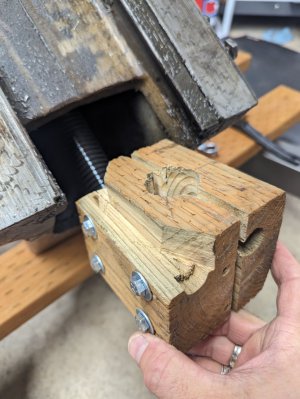
I'm not much of a hand with metals yet, but I can turn scrap wood into useful things...and this worked perfectly; sincere thanks for the idea. I got the top nut off with very little effort... although in doing so I learned that the elevator nut that sits within the base
doesn't come off, so now I'm going to have to do some thinking on how to fix
that. In the meantime, I did manage to get both of the elevation gears loose, and I got the screw and shaft free; I even left one of the stop collars in place on the shaft so that I'll have a rough idea of its indexing in the future...and that is where the good news stops.
Pictured: Now, the fun begins.
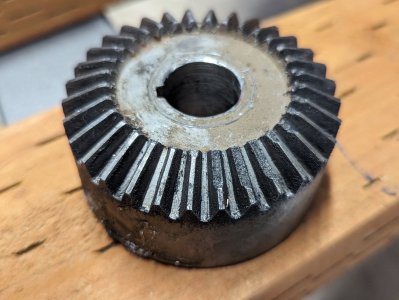
That's the least-terrible thing that we're about to see...and that's mostly - but not
entirely - due to my suspicions being confirmed regarding something being stuck in the teeth of one or the other gears. And what was it, exactly, that was stuck in the teeth?
Pictured: Other teeth.
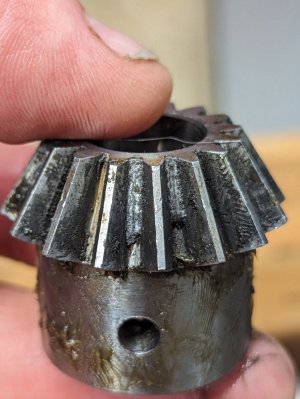
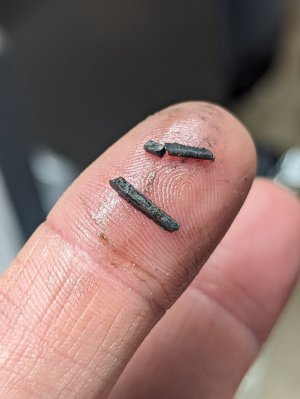
Those popped out into my hand with barely any pressure from a small pick...and then they crumbled. Like, seriously, two pieces became three, and then three became about sixteen; whatever happened in here effectively turned the broken parts of those teeth into greasy glitter. And I'm honestly not surprised about that, because the condition of the back side of the gear can only be explained by it having been worked on by an escaped fiend.
Pictured: Or a chimp. Or a concrete guy.
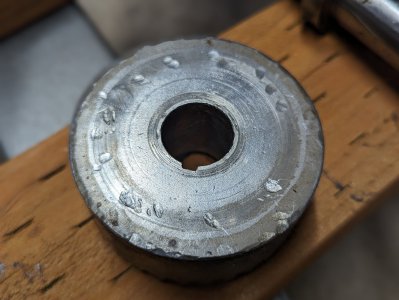
Okay, no jokes here: I don't get this. I genuinely have no idea why someone would have to hammer on the
back side of this gear in this way; that's not how it comes off the shaft. It wasn't really that difficult to remove, either; I just left the wooden clamp on the screw and used a small hammer and a length of wooden dowel to tap it off...and it didn't complain much. The shaft itself looks okay...
Pictured: At least, I hope it's okay...
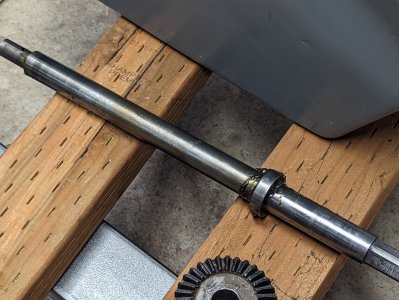
...but the gear itself is smurfed. Royally smurfed.
Pictured: I got 99 problems, but an intact tooth ain't one.
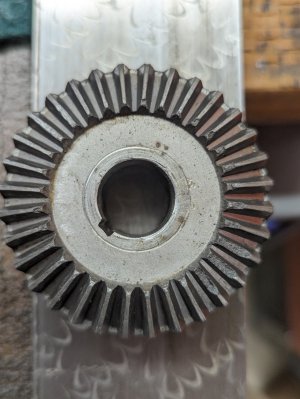
Lots of damage, there. Some of it can be lived-with, methinks, but somewhere around two dozen of those teeth have some kind of cracking/crumbling damage to them...and some of the others are impact-damaged: look up around the 10:00 portion in that photo. Those look peined in the same way that the back of the gear does; I have no way to prove it, but I'm betting that the same concrete guy that went full chimpo on the back is responsible for this damage on the front. I do think that the outright breakage and the jamming occurred recently - specifically, when I was futzing with things - because I honestly don't recall detecting a problem with the table elevation mechanism beforehand...but I think the damage that
allowed the breakage was caused in the past. And if the gears aren't evidence enough, I will now humbly submit an image or two of the taper pin that flagged me and then started this entire process.
Pictured: A tiny metal banana.
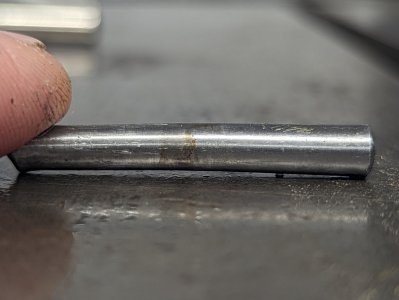
I didn't cause that bend when I tapped it out, because it basically
fell out...because that's how tapers work. They work so well that even with the pin end
completely deformed there wasn't enough resistance to cause the pin to seize in the hole...but that deformation was definitely enough to keep it from going all the way through and seating properly.
Pictured: Who uses something like this?!?!
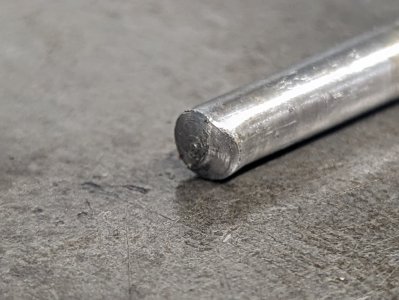
And with that, Dear Reader, I am stepping away from things for a few hours. I'll clean up the gears and start measuring them here in a bit, and then I'll hope that there's a set in a catalog somewhere that can be made to work. Failing that...well, we'll see. That's a problem for tomorrow, and tomorrow is another day.
In the meantime: to whomsoever did this...f*** you, man. You knew better, and I know that because I know that you couldn't
get this far inside without knowing better. You
knew it...and you did this anyway.
Bravo, Johnny Chimpo...
bravo.










